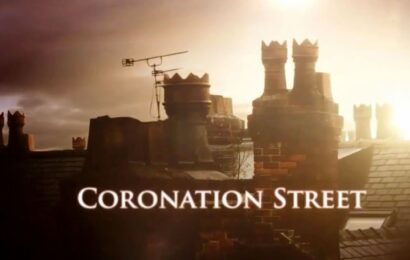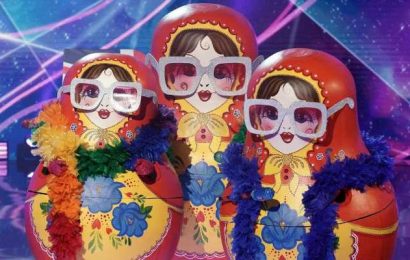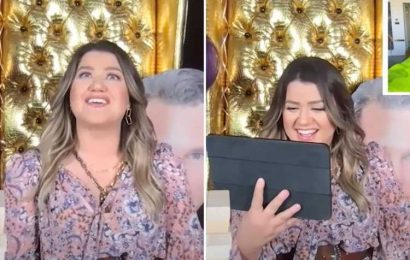This past summer, filmmaker Billy Luther (Navajo, Hopi, and Laguna Pueblo Tribes) headed to New Mexico to film his narrative feature debut, “Frybread Face and Me.”
Luther’s previous credits include the documentary “Miss Navajo” and the 2018 reality TV series “Alter-Native.” With “Frybread Face and Me” selected as part of the 2020 Sundance Institute and Film Independent Directors and Screenwriters Labs, Taika Waititi hopped on board to executive produce.
Below, as part of Native American Heritage Month, Luther shares his experience from writing a personal story, to shooting his first feature during the pandemic and the importance of Native representation.

You’re currently in post-production for “Frybread Face and Me” — what was the genesis of the story and what inspired it?
I’m multi-tribal – Navajo, Hopi, and Laguna Pueblo. Identity was something I was always been challenged with as a kid. People tend to put “Native Americans” into one box. They don’t realize tribes have different languages, belief systems, and creation stories.
It didn’t hurt that I had a colorful family that gave me plenty of great material to work with. My mother was a product of the government boarding schools and my dad was drafted to Vietnam. And here I was, a Native kid roller skating down the streets of San Diego, speaking in tongues in church every Sunday.
Growing up, I wrote short stories during the summers I spent with my grandparents on different reservations. Those stories are long lost because we moved around so much. The stories my traditional Navajo grandmother told weren’t written down, they were part of an oral tradition. A few years ago I went to visit her and being in those familiar spaces brought back so much of the stories I had written back then. I felt like my 11-year-old self again. I returned to L.A. and began writing.
How did Film Independent play a part in getting this off the ground?
I actually moved to L.A. because of their program Project: Involve 20 years ago. At that time, it was one of the only programs in Hollywood that supported and mentored filmmakers of color starting in the industry. It is amazing to see so many of my peers from that time working today. I couldn’t afford to finish film school so I started volunteering at their events – producer’s conferences, director’s series. I began meeting so many people in the industry and formed solid relationships because of that. I still have my Rolodex filled with business cards from those days.
At the height of the pandemic, I attended the Film Independent and Sundance Directors Labs, virtually. It was bittersweet because I wanted to have the hands-on and immersive experience that those labs offer. Instead, we were in Zoom boxes for those two months. But the filmmakers in both labs worked just as hard as we would have if we had been in the same room. It was a strange time because no one knew what the future of Hollywood was going to be.
And you started filming this Summer?
My producer Chad Burris (Chickasaw) came on last year, and it was so important for me to have a Native producer on this. There is so much texture and nuance to the story. I needed a producer who understood both what it means to be Native and also to understand what it feels like to be an outsider in their own community. We were also able to bring Taika Waititi on board as executive producer. That helped a tiny little bit.
Cut to June 2021, we were in New Mexico. We didn’t know what was going to happen because of all the COVID safety protocols that were constantly changing. We also hired a local crew and the New Mexico Film Office was so supportive of this project. One minute we were financing, the next we were casting and then we were shooting. It happened so fast. I still wake up and say to myself, “I made a film during the pandemic.”
The film’s cast features Native American actors — can you share how you found your cast?
This film needed an Indigenous cast and I knew the search for these two leads was going to be a challenge. With the help of Midthunder Casting, which also worked on FX “Reservation Dogs,” we were able to find these incredible kids. The amount of Indigenous talent – Martin Sensmeier, MorningStar Angeline, and Jeremiah Bitsui came on. And we also brought on some amazing new faces from Indian country that are making their feature debut. This set was filled with so many Natives.
Every day it was incredible to see not only our cast but key Indigenous crew members — camera, art department, wardrobe — all working together.
What’s so important to me is that we have been telling our stories and making films with Indigenous narratives for the longest time. Now people are finally beginning to listen and pay attention.
On “Frybread Face and Me,” we were surrounded by Native creatives behind and in front of the camera, which left room for the nuances of Native representation to grow within our performances. With others on set, I was able to trust the production process and hone my character in a truly unique way. No singular voice can speak for any community of Native peoples, so when we facilitate spaces for not only Native actors but crew as well, we move towards diversity more sustainably.
MorningStar Angeline (Ann) – It is a rare opportunity for any Native actor to walk on a film or TV set and get to only focus on their character and acting. Too often we walk on set and have to play the role of Native consultant, advocating for authentic Native representation through all story elements (i.e. wardrobe, hair, etc.).
Jeremiah Bitsui (Uncle Roger) – Years before “Breaking Bad” and “Better Call Saul” were in sight, culturally and ethnically ambiguous opportunities were few and far in between for a young actor of Indigenous descent. In my youth, I ended up backing away from acting after Hollywood deemed me “not looking native enough.” By Hollywood standards that meant having long hair. Today is the dawn of a new day for Indigenous actors in filmmakers with projects being developed, written, produced, directed, and crewed.
What was it like shooting your feature directorial debut during the pandemic?
We’re still in it. I’m not sure we’re going back to how things used to be. I haven’t had time to come up for air since we wrapped mid-August. I wished during our rehearsals we had more time in person – because of Covid, we had to do a lot on Zoom. Actors need eye contact and physical interaction. But when we did get to film those scenes, the lack of being around people for almost two years really had an impact on performance, and it was a good thing. We’re human and we need contact and intimacy.
We built our set from scratch. Everyone on the Native cast and crew felt that it was home. It felt lived in, and alive. That was the kind of on-set experience I wanted to create. Many of us weren’t able to see our relatives or grandparents during the pandemic. And this was our first time out in the world – since the pandemic – working together to tell a story about family and identity. A lot of laughs and challenging days, but one of the greatest experiences of my life.

Source: Read Full Article







